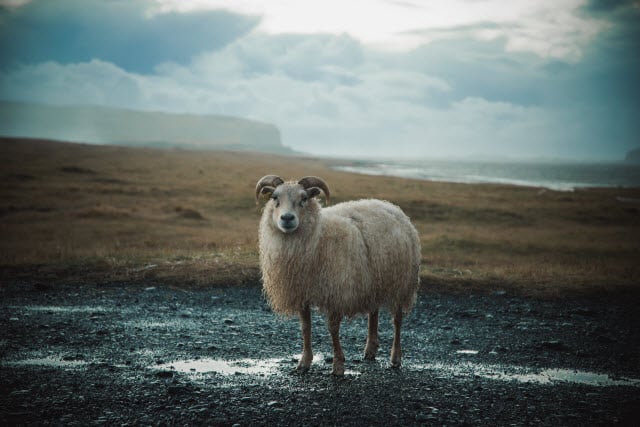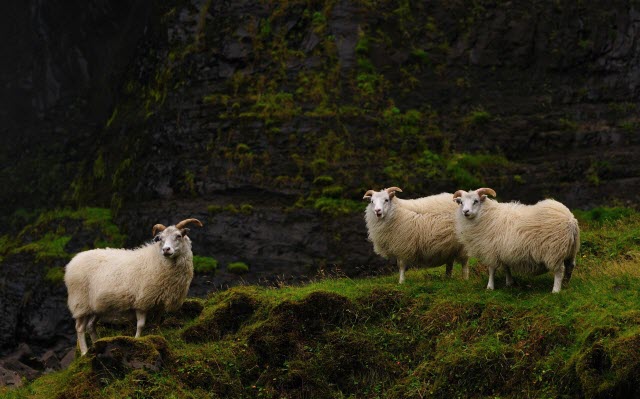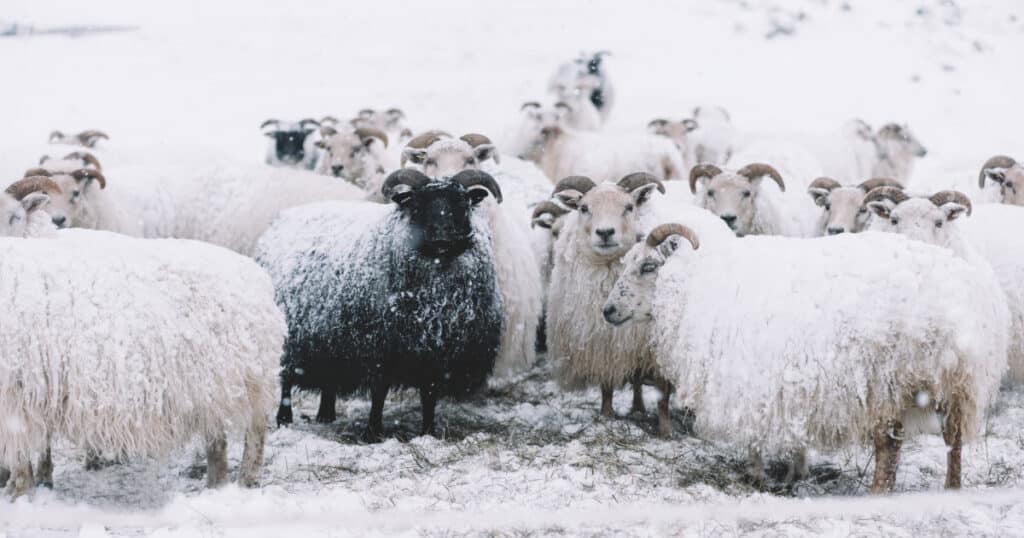What we recognize as the Icelandic sheep breed is a heritage breed descended from sheep which were brought over to Iceland during the ninth century by Viking immigrants. Icelandic sheep are classified as a type of North European Short Tailed sheep and are directly related to other sheep breeds such as the Shetland, Romanov and Finnsheep.
The shared genes amongst these sheep are easily distinguishable – these breeds share similarities in their appearance which allows them to be identified as sheep breeds native to Iceland.
More About the Icelandic Sheep Breed
Today Icelandic sheep are able to survive in all types of climates, even those that experience drastic changes. The ewes are good at providing milk for their lambs and are known to live for long periods of time.

While the Icelandic sheep breed can be used for meat, they are better known for their wool production – their fleeces are known for producing beautiful yarn.
The Icelandic has fleece colors that include black, white, brown, tan and gray. Both sexes of the Icelandic sheep breed are able to grow horns.
Multiple Births in the Icelandic Breed
Researchers have identified a gene in Icelandics which can drive a higher number of offspring in ewes. If a ewe has two copies of the gene then 3, 4, 5, or even 6 lambs may be born in a single pregnancy.

If a ewe has a single copy of the gene, she will still exhibit a higher tendency to deliver more lambs than most breeds of sheep … though carriers of a single copy are most likely to deliver triplets.
Breed Information
| AVERAGE FIBER DIAMETER | Micron: Undercoat 19-22 Outercoat 27-30 USDA Wool Grade: Undercoat 46’s-56’s Outercoat 50’s-56’s |
| MATURE BODY WEIGHT | Ram: 180-220 lbs. Ewe: 130-150 lbs. |
| GREASE FLEECE WEIGHT | Ewe: 4-5 lbs. |
| YIELD | 50-65% |
| STAPLE LENGTH | Undercoat 2-4″ Outercoat 4-18″ |
To learn more about this breed or to find a breeder near you, visit the Icelandic Sheep Breeders of North America website.

